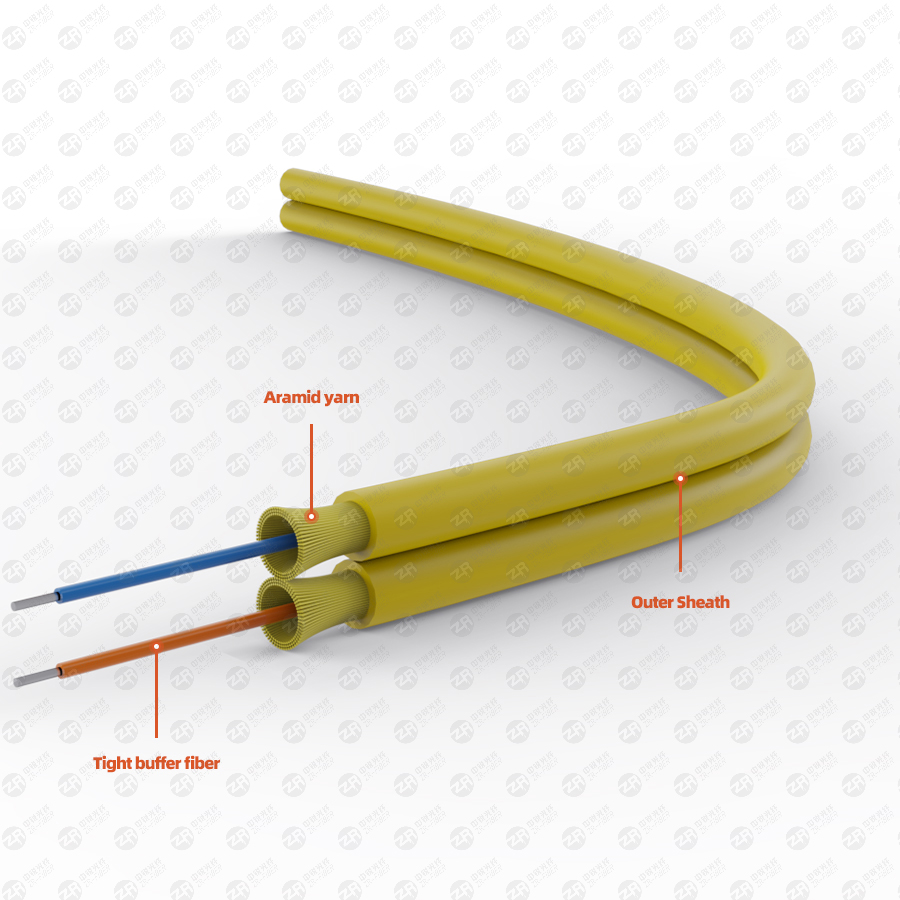The distributed optical fiber temperature measurement system can be divided into three types according to the principle of backscattering: based on Rayleigh scattering, based on Raman scattering and based on Brillouin scattering. At present, the development is relatively mature, and the products used in engineering are the distributed optical fiber temperature measurement system based on Raman scattering. Its sensing principle is mainly based on the optical time domain reflectometry (OTDR) principle of the optical fiber and the back Raman scattering temperature effect of the optical fiber.
With the development of my country's economy, the power system is developing in the direction of ultra-high voltage, large power grid, large capacity and automation. Once an accident occurs, it will cause huge losses to the national economy. How to conduct online monitoring of running power equipment and conduct safety prediction and temperature trend analysis? How to scientifically analyze equipment quality, operating environment, operating mode, equipment aging, load imbalance, etc. through real-time data? These are all power systems. issues that urgently need to be addressed.
Traditional infrared thermometers, infrared imagers, and efficient maintenance provide scientific basis. The distributed optical fiber temperature measurement system can realize multi-point, online distributed measurement, realize real-time online monitoring of operating equipment, and effectively solve the problem of high temperature, combustion, explosion, fire and other accidents that have occurred on the site for a long time. .
The basic principle of distributed optical fiber temperature measurement
1. The distributed optical fiber temperature measurement system can be divided into three types according to the principle of backscattering: based on Rayleigh scattering, based on Raman scattering and based on Brillouin scattering. At present, the development is relatively mature, and the products used in engineering are the distributed optical fiber temperature measurement system based on Raman scattering. Its sensing principle is mainly based on the optical time domain reflectometry (OTDR) principle of the optical fiber and the back Raman scattering temperature effect of the optical fiber.

(1) Principle of Optical Time Domain Reflectometry (OTDR)
When a laser pulse is transmitted in an optical fiber, scattering occurs due to the microscopic inhomogeneity of the refractive index in the optical fiber. In the time domain, the time required for the incident light to return to the incident end of the fiber through backscattering is t, and the distance traveled by the laser pulse in the fiber is 2L, where v is the propagation speed of the light in the fiber, and C is the vacuum is the speed of light, and n is the refractive index of the fiber. When the time t is measured, the distance from the light source L can be obtained.
(2) Backward Raman Scattering Temperature Effect of Fiber
When a laser pulse is launched into the fiber from one end of the fiber, the light pulse travels along the fiber. Due to the elastic collision and inelastic collision between the light pulse and the molecules inside the fiber, the light pulse will be reflected at every point in the propagation, and there is a small part of the reflected light in the reflection, and its direction is just opposite to the direction of the incident light (also called for backward). The intensity of this retroreflected light has a certain correlation with the temperature of the reflection point in the light.
The higher the temperature of the reflection point (the ambient temperature of the fiber at this point), the higher the intensity of the reflected light. Using this phenomenon, if the intensity of the retroreflected light can be measured, the temperature of the reflection point can be calculated, which is the basic principle of using optical fiber to measure temperature.
As expressed by the formula: When the laser pulse interacts with the fiber molecules when propagating in the fiber, Rayleigh scattering, Brillouin scattering, and Raman scattering occur, where Raman scattering is due to the thermal vibration of the fiber molecules and the photon interaction produced by the exchange of energy. If a part of the light energy is converted into thermal vibration, then a light with a wavelength longer than the light source will be emitted, called Stokes light; if a part of the thermal vibration is converted into light energy, a light with a shorter wavelength than the light source will be emitted, called Anti-Stokes light. According to the Raman scattering theory, under the condition of spontaneous Raman scattering, the light intensity of the two reflected beams is related to the temperature, and their ratio R(T) is:
(1) where and are the Stokes light intensity and the anti-Stokes light intensity, respectively, h is Planck's constant, k is Boltzmann's constant, and T is absolute temperature. It can be seen from formula (1) that R(T) is only related to the temperature T. Therefore, we can measure the temperature by means of the ratio of anti-Stokes to Stokes light intensity.
Sensing Process of Distributed Optical Fiber Temperature Measurement System
The sensing process of the distributed optical fiber temperature measurement system is as follows: the computer controls the synchronous pulse generator to generate pulses with a certain repetition frequency. The acquisition card provides synchronization pulses and enters the data acquisition state.
The optical pulse enters the sensing fiber through one port of the wavelength division multiplexer, and generates backscattered light at various points in the fiber, and returns to the wavelength division multiplexer. The backscattered light passes through the thin-film interference filter in the wavelength division multiplexer to filter out the Stokes light and the anti-Stokes light, respectively, and outputs through the other two ports of the wavelength division multiplexer, and enters into the respectively. Photoelectric conversion and amplification are performed in the photoelectric detector (APD) and amplifier, and the signal is amplified to the range that the data acquisition card can collect. Finally, it is stored and processed by the data acquisition card for temperature calculation.